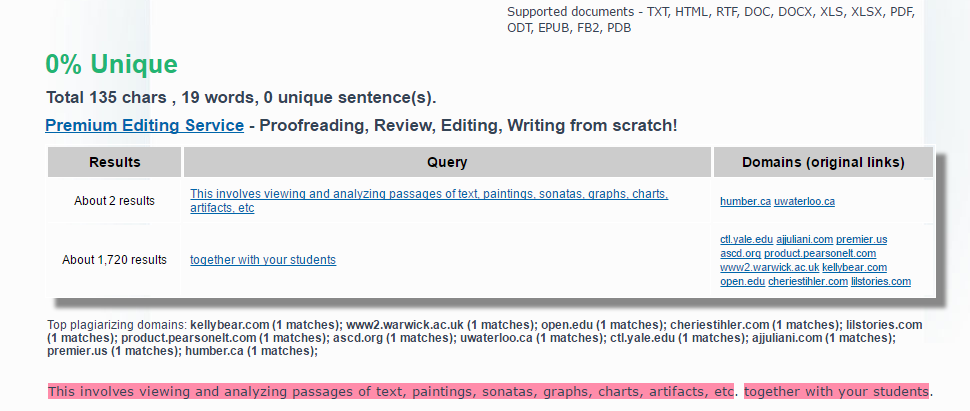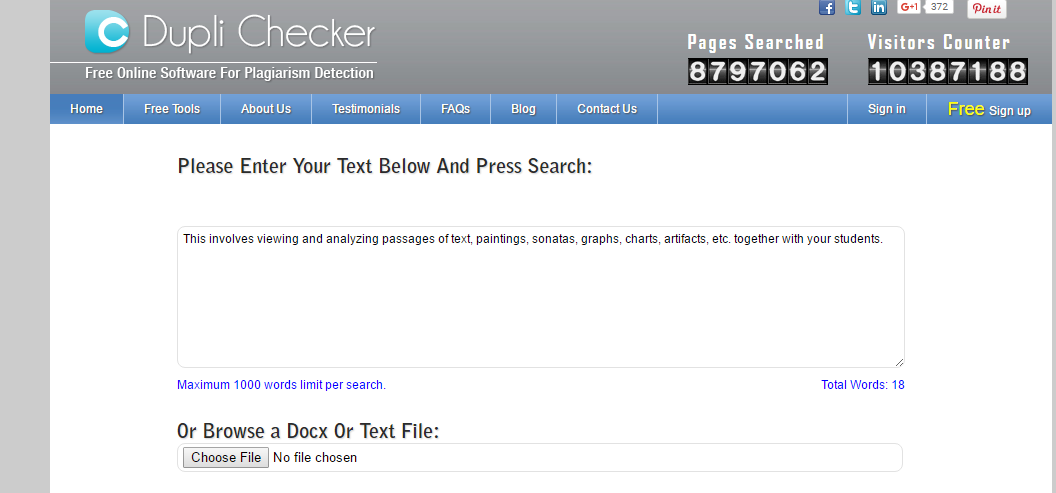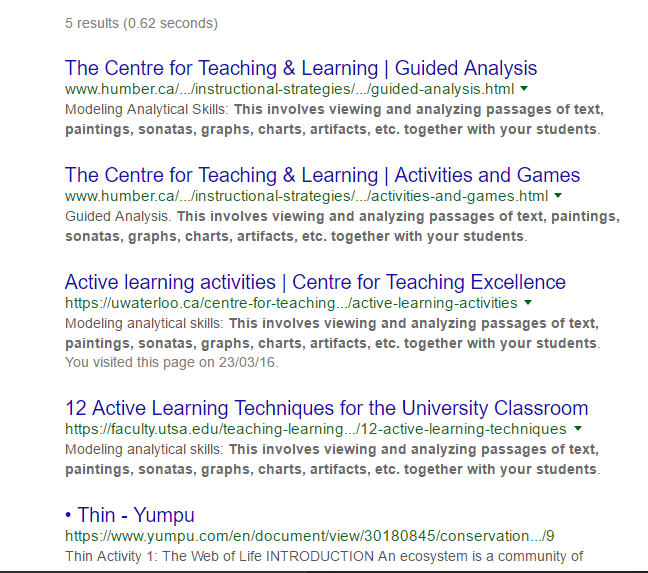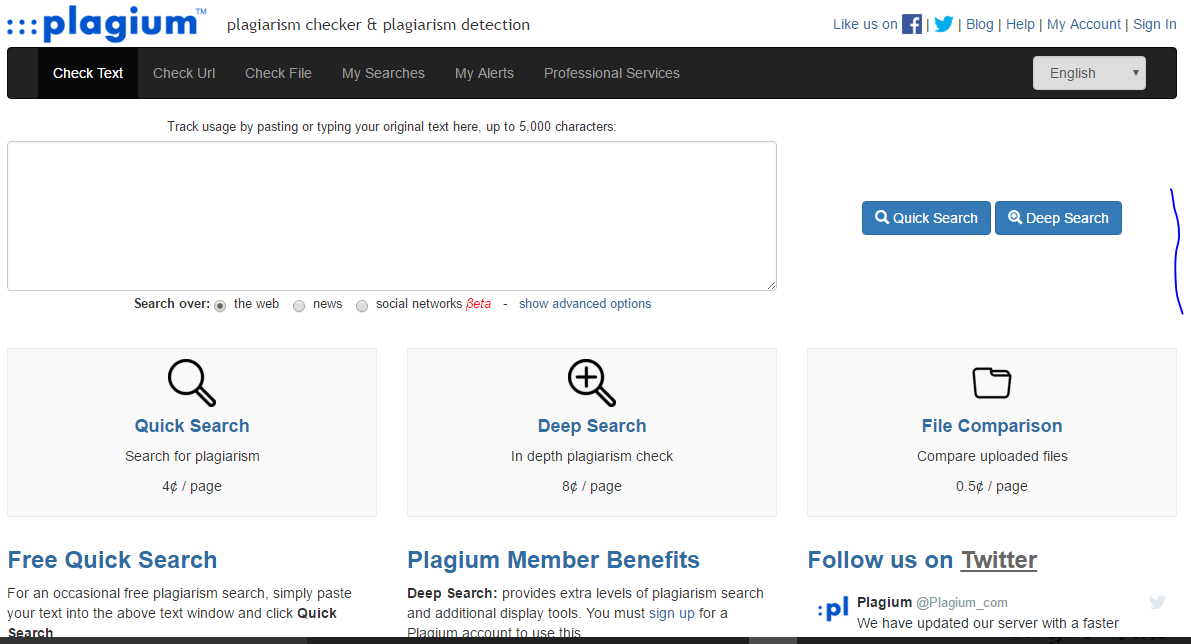A Short-List of Digital Plagiarism Detection Sites
The 447,000 results that appear after a quick Google search for plagiarism detection sites, attest to the need for such tools in the academic world. Even though colleges and universities do their best to teach students how to reference their work properly and how to avoid problems with plagiarism, every teacher is faced with cases of plagiarism at some point in their career.
Some colleges and universities have opted for software that is made available to teachers and students as a means of verifying assignments for their authenticity, such as Turnitin.com and Compilatio.net. However, when this is not an option, teachers can turn to the multitude of free internet sites that offer these services. Many of these sites promote their services to teachers and students alike. Providing a way for students to double check their own work before handing it in. This an interesting way of making students aware of the technicalities of good referencing techniques and keeping their assignments original.
The way most of these sites work is to compare the similarity of the text entered in the text box (typed in, copied and pasted or uploaded) to texts and documents on the Internet. Unlike software that is installed on a computer, these web based services do not store content. This limits the ability to compare with other academic papers and assignments that a teacher may want to verify. However, these sites are able to help detect texts that have been duplicated from Internet sites.
For the majority of these sites, the results are presented in the form of a proportion of uniqueness or the originality of the text. Sentences are displayed in a list format. Those that were found to be similar to other sources are highlighted with references to the websites where the sentences were found. The user can then click on the link to be directed to the webpage in question to conduct further verification.
Below is a short-list of the sites I tested along with a brief explanation of each.
Plagiarisma.net
Plagiarisma.net offers a basic version of their detection service for free. They also have a premium version, which the user must pay for. The information provided here is based on my experience with the basic version.
- It supports 190 languages.
- The user has the choice of selecting either Yahoo or Google (if registered) as their search engine.
- The user can choose to conduct a search based on comparing the exact text in its entirety or not.
- By registering the user is allowed to conduct more searches, since users of the basic account are limited to 3 or 4 searches per day.
- A non-registered user will have access to 3 searches using Yahoo and then they are prompted to register.
- A registered user will have access to 4 searches per day, either with Google or Yahoo, before being prompted to upgrade to the premium version.

An example of results from Plagiarisma.net.
Dupli Checker
Dupli Checker offers free services for plagiarism verification. They also offer a plethora of additional services that can be explored on their website (spell check, word count, key word density for websites, etc.).
- Text comparison is limited to 1000 words at a time.
- Registered users can conduct 50 searches per day.
- Non-registered users are limited to 1 search per day.

Dupli Checker allows users to easily upload files or to enter them in the text box before they are verified for similarities.
Plagiarism Checker
Plagiarism Checker offers unlimited services and no registration is required.
- In order to have each sentence analyzed individually, the user must separate the sentences by hitting enter after each sentence.
- The user can decide to use either Google or Yahoo as the search engine.
- Results are displayed in the Google or Yahoo browser, which is different from other sites. The names of websites are provided with the similar sentence or words found highlighted in black.
- The advantages of using this site as compared to simply entering a search directly in a search engine is that the user can enter multiple sentences at the same time. In addition, the user does not have to use quotation marks or special operators for the search to detect similarities correctly.
- There are additional settings that be used to refine the search.
- There are extra features for authors of website content, such as signing up to receive Google Alerts.
- The site also offers free handouts that can be provided to students to teach them more about plagiarism.

Plagiarism Checker results are displayed in Google or Yahoo search results, highlighting the text that was analyzed in black.
Plagium
Plagium offers both free services and paid services.
- Non-registered users can complete 3 searches per day and are limited to the quick search option. The developers recommend this for occasional users.
- Registered users pay for credits which can be used for the different services the site provides.
- Users can enter up to 5000 words at a time for verification.

Plagium offers a free quick search option for occasional users.
The four plagiarism detection sites presented here are only a small sample of the different sites that exist. However, from the approximately 15 different sites I tested, I can state that these sites are truly free sites (all have free options) with efficient and effective detection capabilities. There are many other tools to help students and teachers in the struggle against plagiarism. The Librarians at Champlain Saint Lambert developed an online guide called UnlockingResearch.com as a way to help students with the research process – from gathering information to writing their citations. This tool was featured in the Profweb article Unlocking Research Everywhere. The CEGEP de Saint-Felicien has also taken a proactive approach, creating an on-line reference guide which covers topics such as “What is plagiarism” and “How to copy without cheating” to name a few. This site is currently only available in French.
Profweb has covered this topic in the past and has published several articles. A list of some of these articles can be found below.
- Cite It! A Tutorial to Help Students Cite Sources
- Digital Plagiarism – Still a Hot Topic
- Strategies for Preventing Students Plagiarism
- Plagiarism and Other Types of Electronic Cheating
- College Teachers in the Battle Against Electronic Plagiarism
We would like to hear from teachers who are using a plagiarism detection service. Which one do you use and why? Are there any strengths and weaknesses the readership should be aware of? Use the comments feature below to let us know.
Editor’s Note: The author would like to thank Catherine Rhéaume at Profweb for her assistance with this article.

